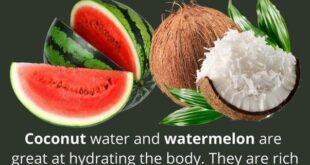Red Guava vs White Guava: Which is Better?
Red guava and white guava are both nutritious fruits, but they differ in several ways that can influence which one might be considered “better” depending on your specific needs and preferences. Here’s a detailed comparison:
Nutritional Content
1. Vitamin C:
- Red Guava: Typically contains higher levels of vitamin C compared to white guava. Vitamin C is crucial for immune function, skin health, and antioxidant protection.
- White Guava: Still a good source of vitamin C but generally lower in this vitamin compared to its red counterpart.
2. Antioxidants:
- Red Guava: Rich in antioxidants like lycopene and beta-carotene, which can help protect against oxidative stress and may reduce the risk of certain cancers and heart disease.
- White Guava: Contains antioxidants as well, but generally in lower concentrations than red guava.
3. Flavor and Sugar Content:
- Red Guava: Often sweeter and more aromatic, with a richer flavor profile. It may have slightly higher natural sugar content.
- White Guava: Usually milder in flavor and less sweet, which might be preferable for those looking to reduce sugar intake.
Health Benefits
1. Digestive Health:
- Both Varieties: Excellent for digestive health due to their high fiber content. Fiber aids in digestion, helps prevent constipation, and can promote a healthy gut.
2. Heart Health:
- Red Guava: Due to its higher antioxidant content, it may offer more benefits for heart health by reducing oxidative damage and supporting cardiovascular function.
- White Guava: Still beneficial for heart health but with potentially less impact compared to red guava.
3. Skin Health:
- Red Guava: The higher vitamin C and antioxidants contribute to better skin health, helping with collagen production and protection against environmental damage.
- White Guava: Also good for skin health but may offer fewer benefits compared to the red variety.
Appearance and Taste
1.Red Guava:
- Typically has pink to red flesh with a sweeter and more intense flavor. The color and flavor come from the higher concentration of antioxidants.
2. White Guava:
- Has white to pale yellow flesh and a milder taste. It might be less visually striking but still offers a refreshing flavor.
Usage
1. Culinary Uses:
- Red Guava: Often preferred in juices, smoothies, and desserts due to its vibrant color and intense flavor.
- White Guava: Commonly used in salads, savory dishes, and jams, where its milder taste can complement other ingredients.
2. Storage and Shelf Life:
- Both Varieties: Have similar storage requirements. They should be kept at room temperature until ripe and then refrigerated to extend shelf life.
Conclusion
Both red and white guavas are highly nutritious and offer various health benefits. The choice between them depends on your specific preferences and nutritional goals:
- Choose Red Guava if you are looking for a fruit with higher antioxidant content, a richer flavor, and a higher vitamin C level.
- Choose White Guava if you prefer a milder flavor and slightly lower sugar content while still benefiting from the fruit’s fiber and overall nutrition.
In summary, neither is universally “better”; it depends on your individual health goals, taste preferences, and how you plan to use the fruit.

 Gistfox Your News Window To The World
Gistfox Your News Window To The World 




